Asteroid 1999 NC43 (86039)
B. Gary,
2014.05.05
This web page summarizes observations of the
above NEO (suggested as the "parent" for the Chelyabinsk
meteorite) using a Celestron 11-inch telescope at the
Hereford Arizona Observatory in 2014.
Links Internal to this Web Page
Data
downloads
2014 Apr28-May01 Tan
LCs
2014
April/May Gary LCs
2014
March Gary LCs
Error analysis
______________________________________________________________________________
Data Download File:
Gary data: Data for 2014 March & Apr/May by B
Gary
Tan
data: Data
for 2014 Apr28-May01 by TG Tan
2014 April/May Gary
Observations
Observations for Apr/May, 2014 are complete. Here's a light
curve for Apr/May showing Gary & Tan observations.
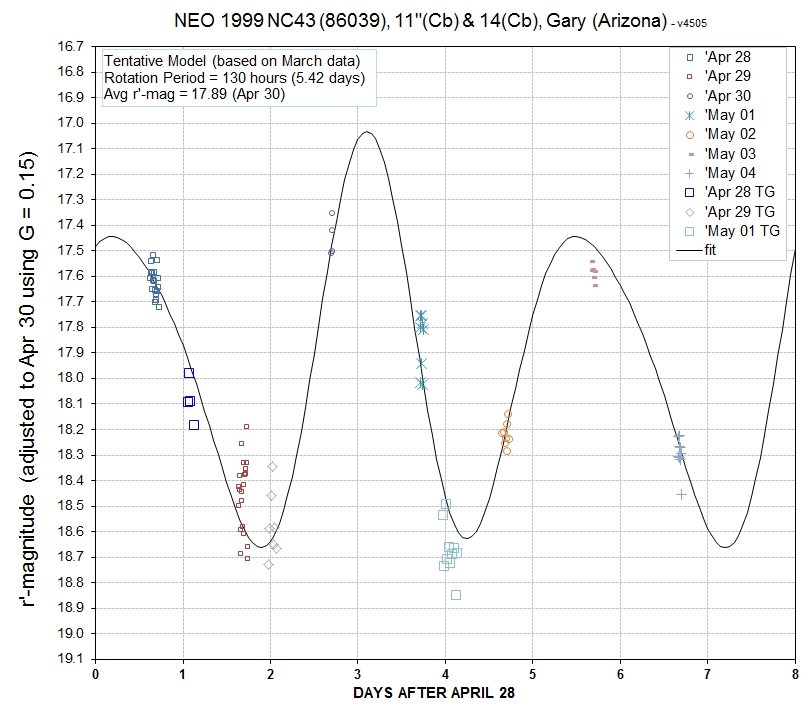
r'-mag vs date for observations beginning Apr 28.
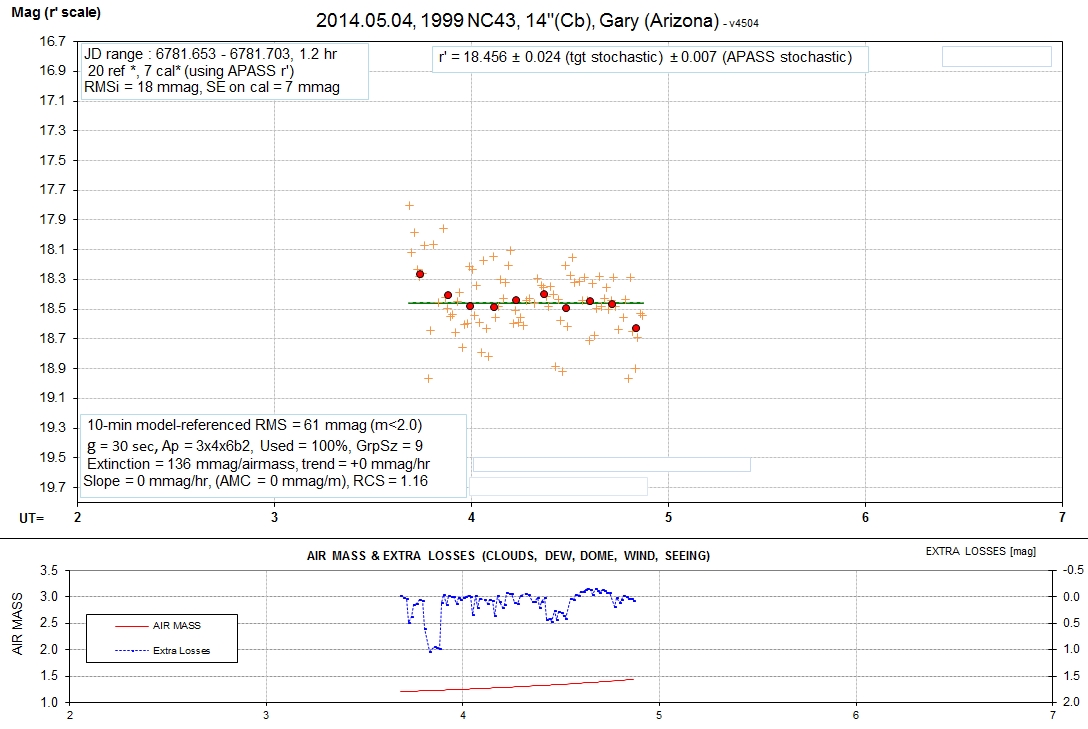
First observation with Meade 14-inch since the mount failed a
year ago.

Last LC using Celestron 11-inch telescope.
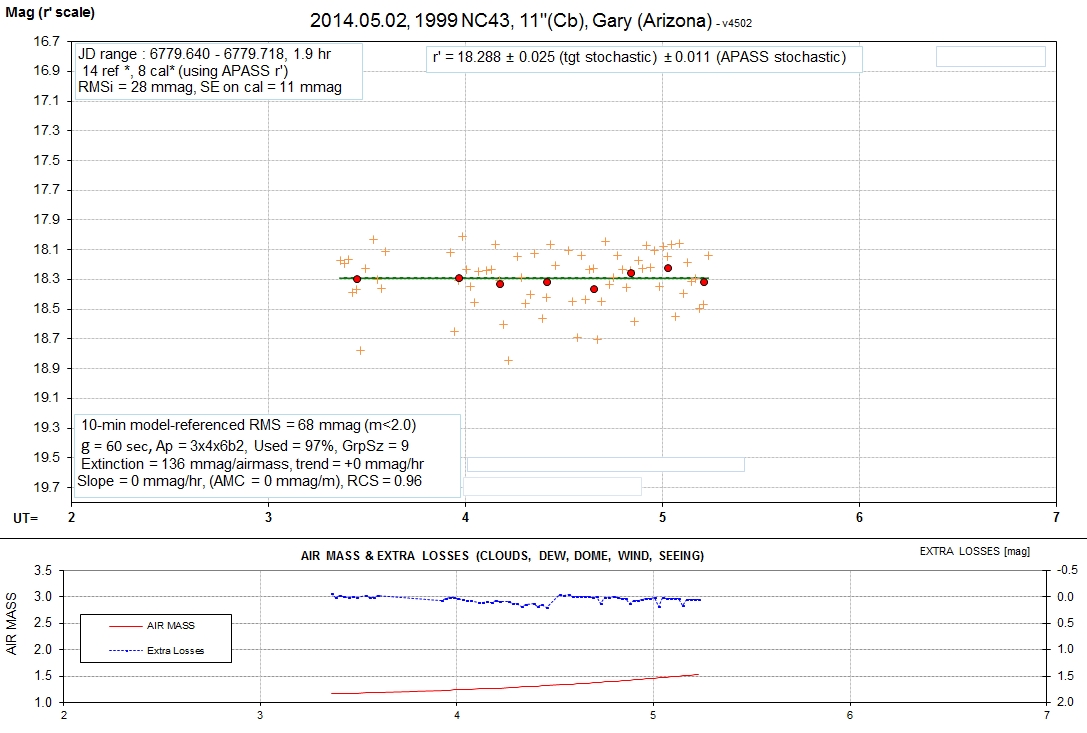

Just a quick 15-minute observation.
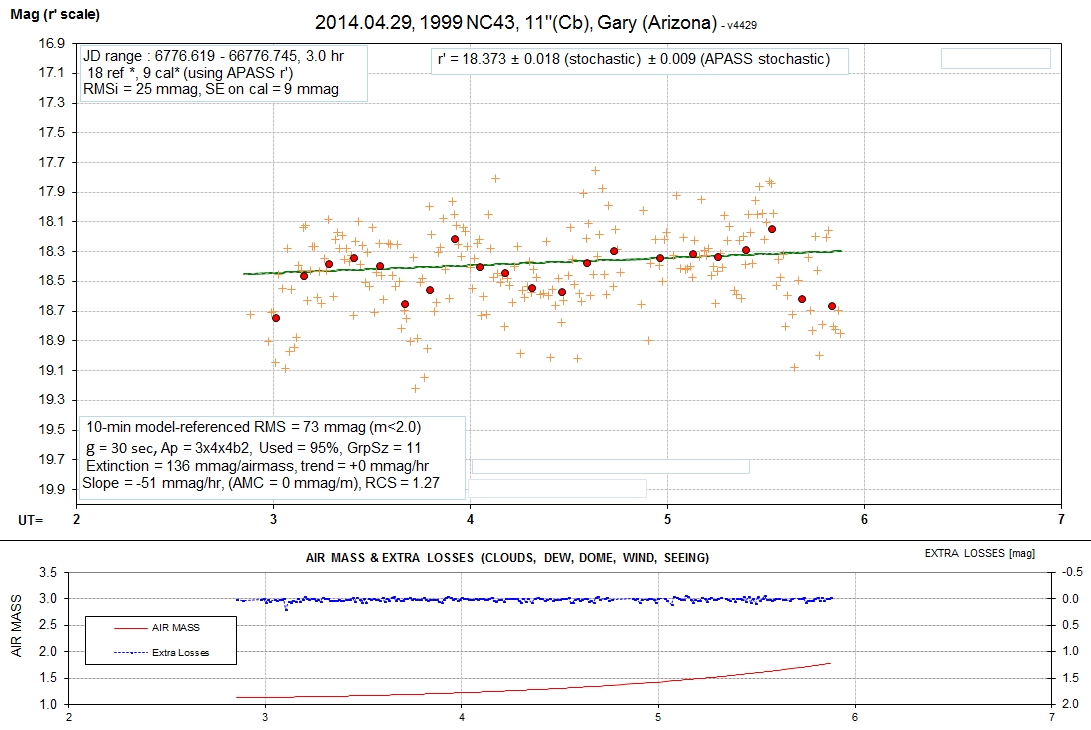
With care it's possible for a 11-inch aperture telescope to
obtain LC mag's for an asteroid with r'-mag ~ 18.5 (V-mag ~ 18.7).

Apr 28 observation with Cb filter and calibrated against
reference stars using their r'-mag's.
2014 March Gary
Observations
The asteroid was observed on 9 dates in early March, 2014. Below is
a 3 sinusoid fit (in which periods for 2 sinusoids were fixed to be
1/2 and 1/3 of the free parameter period; all amplitudes and phases
were free to vary). The largest amplitude periodicity was 63
hours, implying a rotation period of 126 hours.

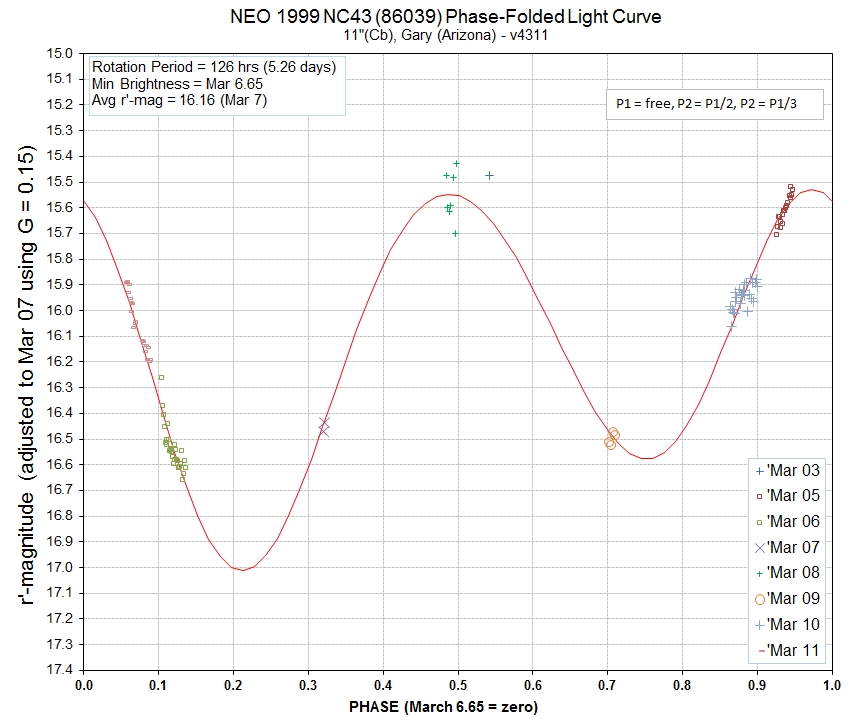
Error Analysis
Uncertainties are of four types:
1) Target asteroid stochastic
2) Reference stars stochastic
3) Reference stars systematic
4) Target asteroid systematics due to background
stars
In each light curve I report the stochastic components for (1) and
(2). These should be orthogonally added, along with ~ 0.020 mag
which I assume is a reasonable SE for component (3), the set of
APASS star mag's within a FOV. Finally, component (4) should be
orthogonally added, but it is difficult to estimate because it
depends on the density of background stars and the brightness of the
asteroid. I recommend estimating component (4) by eyeballing the
variation of average values in a LC with respect to the model fit
trace. Every LC has the most obvious background star interference
images removed from consideration, but there will be a residual
variation due to those i didn't identify.
For example, in the LC for 2014.04.29, above, I estimate the SE
variation of the averages to be 0.025 mag. The two stochastic
components are 0.018 and 0.009 mag. All components to be
orthogonally added are 0.018 (asteroid stochastic), 0.009 (reference
stars stochastic), 0.020 (APASS systematics) and 0.025 (background
star systematics) mag. Their orthogonal sum is 0.038 mag.
This web page created 2014.04.29 by webmaster Bruce Gary








